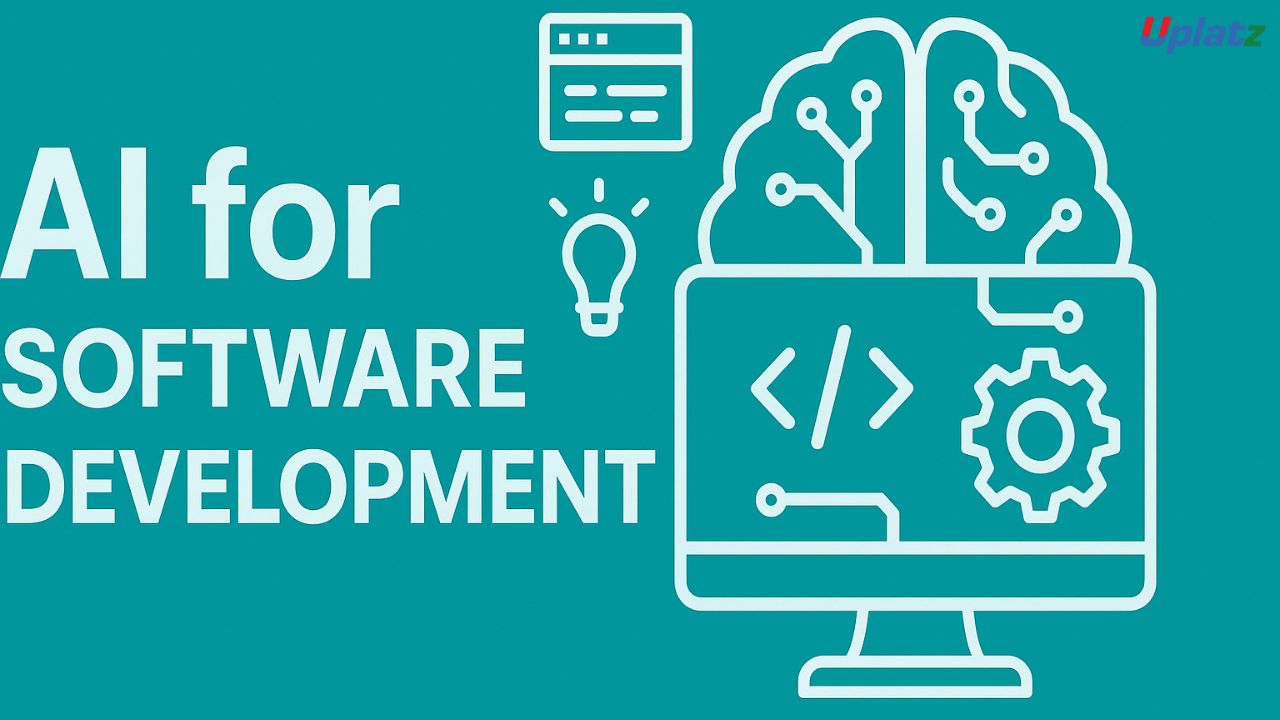AI Cybersecurity
Harness Artificial Intelligence to Detect, Prevent, and Respond to Evolving Cyber Threats Price Match Guarantee
Full Lifetime Access
Access on any Device
Technical Support
Secure Checkout
Course Completion Certificate
Price Match Guarantee
Full Lifetime Access
Access on any Device
Technical Support
Secure Checkout
Course Completion Certificate
 97% Started a new career
BUY THIS COURSE (
97% Started a new career
BUY THIS COURSE (GBP 12 GBP 29 )-
 86% Got a pay increase and promotion
86% Got a pay increase and promotion
Students also bought -
-

- Quantum Machine Learning (QML)
- 10 Hours
- GBP 12
- 10 Learners
-

- AI for Software Development
- 10 Hours
- GBP 12
- 10 Learners
-

- Edge AI and TinyML
- 10 Hours
- GBP 12
- 10 Learners

As organizations grow more connected and data-driven, the threat landscape expands rapidly — with cyberattacks becoming more sophisticated, automated, and difficult to detect. Traditional rule-based security methods are no longer enough to defend modern digital infrastructures. To stay ahead of attackers, organisations need intelligent, adaptive, and proactive security systems powered by Artificial Intelligence.
The AI Cybersecurity course by Uplatz provides a comprehensive introduction to how AI and machine learning revolutionise cybersecurity operations. Through hands-on projects, real-world datasets, and industry tools, this course teaches you how to build automated threat detection systems, predictive defense models, and AI-enabled security workflows.
🔍 What Is AI Cybersecurity?
AI Cybersecurity applies artificial intelligence to strengthen defensive capabilities across networks, cloud platforms, and digital ecosystems. Instead of relying solely on static rules and manual monitoring, AI-enhanced security systems can:
-
Detect abnormal behaviour in real time
-
Predict cyberattacks before they execute
-
Analyse massive security logs instantly
-
Identify new malware variants automatically
-
Reduce false alerts in Security Operations Centers (SOCs)
-
Trigger automated responses during attacks
By using machine learning, deep learning, NLP, and anomaly detection models, security teams can respond faster and more accurately than ever before.
This field is essential for defending against:
-
Zero-day exploits
-
Ransomware
-
Advanced persistent threats (APTs)
-
Insider attacks
-
Botnets
-
Phishing campaigns
-
Distributed denial-of-service (DDoS) attacks
The course equips learners to design modern AI-driven defense frameworks that strengthen resilience across all layers of digital infrastructure.
⚙️ How AI Enhances Cybersecurity Systems
AI transforms key areas of the cybersecurity lifecycle:
1. Threat Detection & Anomaly Analysis
Machine learning models analyse network traffic, user activity, and system logs to identify unusual patterns that may indicate compromise.
2. Malware & Attack Classification
AI models classify files, URLs, and scripts as safe or malicious using pattern recognition, embeddings, and sequence models.
3. User Behavior Analytics (UBA)
AI learns normal user activities and flags suspicious deviations that may indicate insider threats or account breaches.
4. NLP for Cyber Defense
Natural Language Processing detects:
-
phishing emails
-
harmful text payloads
-
fraudulent communication patterns
5. SOAR (Security Orchestration, Automation & Response)
AI automates repetitive SOC tasks such as triage, analysis, and incident response, reducing workload and increasing speed.
6. Predictive Cybersecurity
Machine learning models forecast attack likelihood, detect vulnerabilities early, and support proactive remediation.
The combination of AI and automation drastically improves detection accuracy, operational efficiency, and response time.
🏭 Industry Applications of AI-Driven Cybersecurity
AI cybersecurity is already adopted by leading organizations such as CrowdStrike, IBM Security, Microsoft Defender, Palo Alto Networks, Cisco, Splunk, and Elastic. It is now the backbone of modern security frameworks across industries.
Common applications include:
1. Financial Services
-
Fraud detection
-
Transaction anomaly monitoring
-
Automated threat scoring
2. Cloud Security & DevSecOps
-
AI-powered vulnerability scanning
-
Secure configuration analysis
-
Threat detection in cloud-native environments
3. Healthcare & Critical Infrastructure
-
Protecting sensitive patient data
-
Stopping ransomware
-
Securing medical devices (IoT/OT)
4. E-Commerce & Digital Platforms
-
Bot detection and prevention
-
Real-time monitoring of login attempts
-
Protection against credential stuffing
5. SOC Automation for Enterprises
-
AI-enhanced SIEM/SOAR
-
Automated correlation of alerts
-
Reduced false positives in security logs
AI cybersecurity skills are in extremely high demand as companies move toward autonomous and intelligent security solutions.
🌟 Benefits of Learning AI Cybersecurity
Mastering AI-driven cybersecurity gives learners several key advantages:
-
Work on the Future of Cyber Defense
AI-based security is replacing traditional rule-based systems. -
Detect Threats Faster & More Accurately
Machine learning models outperform manual log analysis. -
Reduce Security Operations Costs
Automation helps SOC teams work efficiently and scale operations. -
Develop Predictive Defense Skills
Move from reactive to proactive cybersecurity. -
Enhance Employability
Cybersecurity professionals with AI skills earn significantly higher salaries. -
Hands-On Knowledge of Modern Tools
Tools used in this course reflect what large organizations use today.
📘 What You’ll Learn in This Course
While the syllabus is separate, your learning journey covers topics such as:
-
Cybersecurity fundamentals and modern attack trends
-
ML-based anomaly detection and intrusion classification
-
Deep learning for malware analysis
-
NLP for phishing and threat intelligence
-
SOC automation and SOAR workflows
-
Security data analytics using Splunk & Elastic Security
-
TensorFlow & Scikit-learn for AI threat models
-
Automating cyber defense with AI pipelines
-
Mini-projects using Python and real-world logs
-
Capstone project: AI-driven cybersecurity monitoring dashboard
You’ll build practical, deployable systems that mimic real-world enterprise security architectures.
🧠 How to Use This Course Effectively
To gain full value from the course:
-
Start with core cybersecurity concepts — vulnerabilities, attacks, and metrics.
-
Learn ML/AI techniques specific to security analytics.
-
Build and train classification models on real datasets.
-
Apply NLP to detect phishing, fraud, and harmful language.
-
Implement anomaly detection for unusual network behaviour.
-
Integrate AI models into SOC workflows and SOAR tools.
-
Complete the capstone project to consolidate skills into a real defense system.
Active practice with datasets and tools is key to mastering AI cybersecurity.
👩💻 Who Should Take This Course
Ideal for:
-
Cybersecurity Analysts
-
SOC Engineers
-
Threat Intelligence Professionals
-
Data Scientists entering cybersecurity
-
AI/ML Engineers
-
Penetration Testers & Security Researchers
-
IT Professionals transitioning to cyber roles
-
Students preparing for cybersecurity careers
Basic Python knowledge is helpful, but the course is beginner friendly.
🚀 Final Takeaway
Cyberattacks are evolving, and organizations can no longer rely solely on manual or rule-based defenses. The AI Cybersecurity course by Uplatz equips you with cutting-edge skills to build intelligent, autonomous, and predictive security systems using AI and machine learning.
By the end of this course, you will be able to design, implement, and deploy AI-powered cyber defense mechanisms that protect modern digital infrastructures from sophisticated and fast-moving cyber threats.
-
Understand AI and ML fundamentals for cybersecurity applications.
-
Detect and prevent network intrusions using ML models.
-
Apply NLP for phishing and malware text detection.
-
Build anomaly detection systems using unsupervised learning.
-
Automate security workflows with AI and SOAR platforms.
-
Enhance endpoint and cloud security using AI models.
-
Evaluate datasets and metrics for cybersecurity model performance.
-
Integrate AI solutions with existing SIEM tools.
-
Understand ethical, legal, and privacy implications of AI in security.
-
Prepare for advanced roles in AI-driven cybersecurity engineering.
Course Syllabus
Module 1: Introduction to Cybersecurity and AI Concepts
Module 2: Machine Learning Fundamentals for Security Analysts
Module 3: Anomaly and Intrusion Detection using AI
Module 4: Malware Detection and Classification with ML Models
Module 5: NLP for Phishing and Social Engineering Detection
Module 6: AI-Powered SIEM and SOAR Systems
Module 7: Deep Learning for Network Security and Threat Analytics
Module 8: AI in Cloud, IoT, and Endpoint Security
Module 9: Ethics, Privacy, and Adversarial AI in Security
Module 10: Capstone Project – Build an AI-Driven Cyber Threat Detection System
Upon successful completion, learners receive a Certificate of Completion from Uplatz, validating their expertise in AI Cybersecurity. This Uplatz certification demonstrates your ability to design and implement machine learning models for network defense, fraud prevention, and digital forensics.
The certification aligns with global industry standards in cyber defense automation, AI security engineering, and SOC modernization. It’s ideal for security professionals, data scientists, and IT engineers aiming to transition into AI-enhanced cybersecurity roles.
Earning this certification proves your capacity to secure digital ecosystems using predictive intelligence and real-time threat analytics — essential skills for the modern cybersecurity workforce.
AI-driven security is the future of digital defense. Completing this course from Uplatz opens opportunities in some of the most high-impact roles in tech, such as:
-
AI Security Engineer
-
Cyber Threat Analyst
-
SOC Automation Specialist
-
Machine Learning Engineer – Security
-
Cyber Risk Consultant
Professionals in this domain typically earn between $110,000 and $200,000 per year, with top-tier roles in cybersecurity startups, cloud service providers, and enterprise IT departments.
Global demand is growing for experts who can blend AI, ML, and cybersecurity to build systems that think, adapt, and defend in real time. This course prepares you for roles in finance, defense, healthcare, and critical infrastructure sectors where data security and AI convergence are vital.
-
What is AI Cybersecurity?
It’s the use of artificial intelligence and machine learning to detect, analyze, and prevent cyber threats automatically. -
How does ML improve threat detection?
By learning from patterns in data, ML models can detect anomalies and potential intrusions more accurately than static rules. -
What are common ML algorithms used in cybersecurity?
Random Forest, SVM, Neural Networks, and K-Means Clustering. -
How can AI help prevent phishing attacks?
NLP models can detect suspicious keywords, links, and tone in phishing emails or messages. -
What is the role of AI in SOCs?
AI automates threat triage, prioritization, and response, reducing analyst workload. -
What is adversarial AI?
The manipulation of AI models by attackers to deceive or bypass security systems. -
How can anomaly detection be implemented in networks?
By training unsupervised ML models on normal traffic to identify deviations as potential attacks. -
What are examples of AI security tools?
Splunk AI, IBM QRadar, Darktrace, and Microsoft Sentinel. -
What are the limitations of AI in cybersecurity?
Data quality, model bias, and adversarial manipulation. -
What ethical issues arise in AI-based cybersecurity?
Privacy concerns, over-reliance on automation, and decision transparency.









